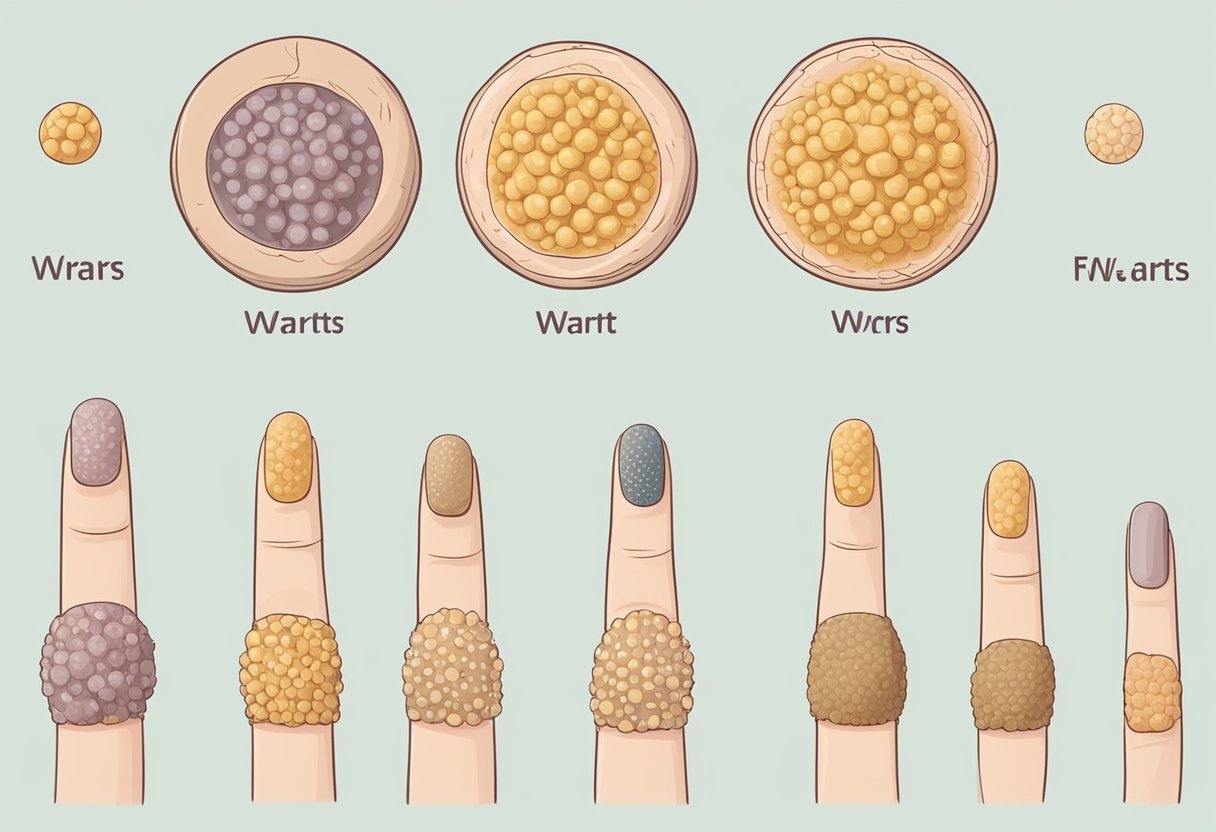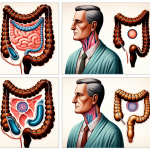Types Of Warts on Fingers
Warts are a common skin condition that can occur on any part of the body, including the fingers. There are several types of warts that can develop on the fingers, each with their own distinct characteristics and treatment options. Understanding the different types of warts on fingers can help individuals identify and manage this condition effectively.
One of the most common types of warts on fingers is the common wart, which typically appears as a small, grainy growth on the fingers or hands. These warts can be rough to the touch and may feature a pattern of tiny black dots, which are small, clotted blood vessels. Another type of wart that can occur on the fingers is the periungual wart, which forms under or around the fingernails and can be particularly painful.
Symptoms of warts on fingers can vary depending on the type of wart and its location. While most warts are harmless, they can be unsightly and may cause discomfort or embarrassment. Treatment options for warts on fingers range from over-the-counter remedies to more aggressive medical interventions. By understanding the different types of warts on fingers and their treatment options, individuals can effectively manage this common skin condition.
Key Takeaways
- Warts can develop on any part of the body, including the fingers.
- There are several types of warts that can occur on the fingers, each with their own distinct characteristics and treatment options.
- Treatment options for warts on fingers range from over-the-counter remedies to more aggressive medical interventions.
Understanding Warts on Fingers

What Are Warts?
Warts are small, noncancerous growths on the skin caused by the human papillomavirus (HPV). They can appear anywhere on the body, but are most commonly found on the fingers, hands, and feet. Warts on fingers can be unsightly and uncomfortable, but they are usually harmless.
Causes and Transmission
Warts are caused by direct contact with the HPV virus. The virus can be transmitted through skin-to-skin contact, or by touching an object that has been contaminated with the virus. Warts are most commonly found in children and young adults, as their immune systems are still developing and may not be able to fight off the virus as effectively.
Common Types Found on Fingers
There are several types of warts that can be found on fingers, but the most common type is the common wart. Common warts are usually small, round, and have a rough surface. They can be flesh-colored, white, or pink, and often have tiny black dots in the center. These dots are actually small blood vessels that have grown into the wart.
Another type of wart that can be found on fingers is the flat wart. Flat warts are usually smaller and smoother than common warts, and can be pink, light brown, or yellow in color. They are often found in clusters on the fingers, and can be more difficult to treat than common warts.
In conclusion, warts on fingers are a common and usually harmless condition caused by the HPV virus. They can be transmitted through direct contact with the virus, and are most commonly found in children and young adults. The most common type of wart found on fingers is the common wart, which is usually small, round, and has a rough surface. Flat warts are another type of wart that can be found on fingers, and are usually smaller and smoother than common warts.
Symptoms and Identification
Warts on fingers are small, rough, and often have a grainy texture. They can appear as a single bump or in clusters. Warts on fingers are usually flesh-colored or slightly darker than the surrounding skin, but they can also be pink, white, or yellow.
Visual Appearance
Warts on fingers can be identified by their visual appearance. They are usually small, raised bumps that are rough to the touch. They may also have a black dot in the center, which is a clotted blood vessel. Warts on fingers can appear anywhere on the hand, but they are most common on the fingertips and around the nails.
Sensation and Discomfort
Warts on fingers can be painful, especially when they are located on pressure points such as the fingertips. They may also be itchy or cause a burning sensation. Warts on fingers can also cause discomfort when performing tasks that require the use of the hands.
When to See a Doctor
If you have a wart on your finger that is causing pain or discomfort, it is important to see a doctor. A doctor can diagnose the type of wart and recommend the best treatment option. In some cases, warts on fingers may need to be removed surgically.
In summary, warts on fingers are small, rough bumps that can be identified by their visual appearance. They can be painful and cause discomfort, especially when located on pressure points. If you have a wart on your finger that is causing pain or discomfort, it is important to see a doctor for proper diagnosis and treatment.
Treatment Options
Warts on fingers can be treated using a variety of methods. The choice of treatment depends on the size, location, and type of wart. In this section, we will discuss the most common treatment options for warts on fingers.
Over-the-Counter Remedies
Over-the-counter remedies for warts on fingers include salicylic acid, which is available in various forms such as gels, pads, and solutions. Salicylic acid works by dissolving the wart tissue and stimulating the immune system to fight the virus that causes warts. These products are easy to use and are generally safe and effective.
Professional Medical Treatments
Professional medical treatments for warts on fingers include cryotherapy, which involves freezing the wart with liquid nitrogen. This causes the wart to blister and fall off within a few weeks. Other medical treatments include electrosurgery and curettage, which involve burning the wart and scraping it off with a sharp tool. These treatments are usually done in a doctor’s office and are effective for removing warts.
Home Remedies and Alternative Methods
Home remedies and alternative methods for treating warts on fingers include duct tape, which is believed to suffocate the wart and stimulate the immune system. Other home remedies include applying apple cider vinegar, tea tree oil, or garlic to the wart. These methods are not scientifically proven and may not be effective for all types of warts.
In conclusion, there are several treatment options available for warts on fingers, ranging from over-the-counter remedies to professional medical treatments. It is important to choose the right treatment based on the type and size of the wart, and to consult a medical professional if necessary.
Prevention and Management
Preventing Wart Transmission
To prevent the spread of warts, it is important to avoid touching them or sharing personal items with someone who has them. It is also important to keep the affected area clean and dry to prevent the virus from spreading. People with weakened immune systems, such as children and adults with certain medical conditions, are more susceptible to warts and should take extra precautions to avoid contact with them.
Caring for Affected Skin
If you have warts on your fingers, it is important to take good care of the affected skin. This includes keeping the area clean and dry, avoiding picking at the warts, and protecting the area with a bandage or other covering. It is also important to avoid touching other parts of your body, especially your face, after touching the warts.
Managing Recurrences
Warts can be difficult to treat and often recur after treatment. However, there are steps you can take to manage recurrences and reduce the risk of spreading the virus to others. These include keeping the affected area clean and dry, avoiding picking at the warts, and using over-the-counter treatments to help manage symptoms. If you experience frequent recurrences or have a large number of warts, it may be necessary to seek medical treatment. Your doctor may recommend topical treatments, such as salicylic acid or cryotherapy, or more invasive procedures, such as surgical removal or laser therapy.
Overall, prevention and management of warts on the fingers involves taking steps to avoid contact with the virus, caring for the affected skin, and seeking medical treatment when necessary. By following these guidelines, you can reduce the risk of spreading the virus to others and manage symptoms effectively.
Potential Complications
Risks of Untreated Warts
While warts on fingers are generally harmless, they can cause discomfort and embarrassment. If left untreated, warts can persist for months or even years. In rare cases, warts can develop into cancerous growths, although this is more common with genital warts than with warts on the fingers. Nonetheless, it is important to monitor any changes in the appearance or texture of warts and seek medical attention if necessary.
When Warts Can Indicate Other Health Issues
In some cases, warts on the fingers can indicate an underlying health issue. For example, persistent warts may be a sign of a weakened immune system, which can be caused by conditions such as HIV/AIDS, cancer, or autoimmune disorders. Additionally, some types of warts, such as those caused by the human papillomavirus (HPV), can increase the risk of developing skin cancer. It is important to consult with a healthcare provider if warts on the fingers are accompanied by other symptoms, such as pain, bleeding, or changes in color or texture.
Overall, while warts on fingers are generally harmless, it is important to monitor them for changes and seek medical attention if necessary. By taking steps to prevent the spread of warts and treating them promptly, individuals can reduce the risk of complications and maintain healthy skin.






